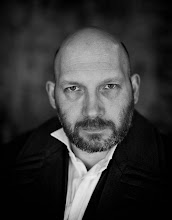 In many ways, Michael Chabon’s ‘Gentlemen of the Road’ is a novel of contradictions. First, of course, it is an unabashed adventure story from a writer who has been best known for his, as Chabon himself notes in the after-word with a slightly self deprecating air, ‘serious, literary’ fiction. Secondly, there is the title of the book itself. Chabon’s preferred title was, and is, ‘Jews With Swords’ which Chabon mocks once again with the image of ‘Woody Allen… and a wavering rapier’.
In many ways, Michael Chabon’s ‘Gentlemen of the Road’ is a novel of contradictions. First, of course, it is an unabashed adventure story from a writer who has been best known for his, as Chabon himself notes in the after-word with a slightly self deprecating air, ‘serious, literary’ fiction. Secondly, there is the title of the book itself. Chabon’s preferred title was, and is, ‘Jews With Swords’ which Chabon mocks once again with the image of ‘Woody Allen… and a wavering rapier’.Those points aside, the novel itself is rife with contradiction – an historical novel which reads like a sword and sorcery adventure (with exotic, and real, names and settings that echo the work of Harold Lamb as much as Robert E. Howard). His two protagonists – Zelikman the Frank and Amram the Abyssian – are poles apart physically and psychologically and form the central contradiction of the novel – being the principal Jews with swords (of the preferred title).
Then there is the writing itself, where Chabon eschews the straightforward narrative and plain English of many a genre writer in favour of a more literary approach - long, meandering passages, shifts in perspective and a pre-occupation with the inner rather that outer life of the characters in a ‘tell, rather than show’ fashion.
There is a long and (sometimes) glorious history of ‘mainstream writers’ working in the speculative realm – Orwell, Robert Harris, Doris Lessing, PD James, Len Deighton, Janette Winterson et al – which brings with it a certain sense of reinventing the wheel. Chabon, to his credit, does not attempt such reinvention, rather he has a genuine sense of respect for what has gone before (hence the dedication of the novel to Michael Moorcock) and never seeks to break with genre convention simply for the sake of it, or indeed to claim the genre as his own private playground (something he shares in common with the historical swashbucklers of Arturo Perez -Reverte).
The plot of the novel is fairly straightforward variant on ‘restore the disposed noble’ replete with a number of plot holes - lives are spared when logic dictates that the character should be slain, coincidence abounds, at one point Amram reaches for his sword when hitherto and henceforth he uses a ‘Viking axe’ and any moderately well read reader will spot the various plot twists long before they come.
The plot of the novel is fairly straightforward variant on ‘restore the disposed noble’ replete with a number of plot holes - lives are spared when logic dictates that the character should be slain, coincidence abounds, at one point Amram reaches for his sword when hitherto and henceforth he uses a ‘Viking axe’ and any moderately well read reader will spot the various plot twists long before they come.
All of this, naturally, is subservient to the main question: is it any good?
Well, yes it is. The strengths of the novel far outweigh its weaknesses – the sense of an exotic past is beautifully evoked, but never in a rose-tinted manner, the kingdom of the Khazars is a dangerous, exciting place and Zelikman and Amram (two heirs to Fafhrd and the Gray Mouser) are amiable, competent companions for the book’s short length and Chabon’s dry sense of humour permeates the novel on every level.
Added to this is the fact that the UK edition is, quite simply, a very handsome object that in its physical appearance evokes a bygone age when books were things to be treasured as well as read.
In Gentlemen of the Road, Michael Chabon has succeeded in bringing swords to the literary market place and for that, if nothing else, he should be applauded.





